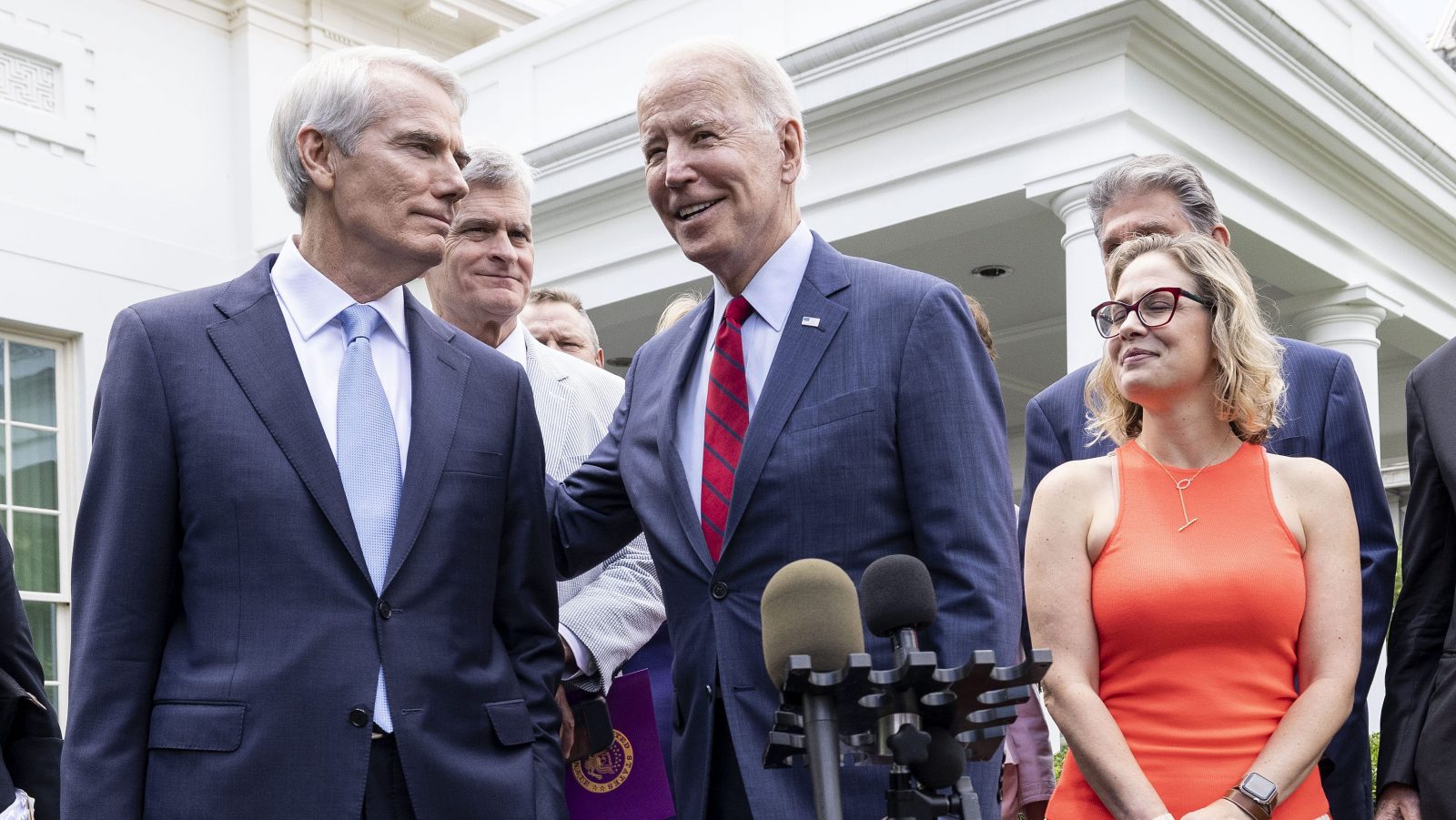It’s been three months since President Joe Biden announced a “once-in-a-generation” infrastructure plan at a carpenters’ training facility in Pittsburgh. “The American Jobs Plan will lead to a transformational progress in our effort to tackle climate change with American jobs and American ingenuity,” Biden said at the time. That was before Biden’s moonshot proposal passed through the political meat grinder that is the U.S. Senate, where most legislation requires 60 votes to get past the filibuster.
Last month, Biden tried to pare down his $2 trillion initial proposal to something a little more palatable to moderate Republicans and conservative Democrats in the upper chamber. Then, a group of Senate Republicans led by Shelley Moore Capito of West Virginia tried to trim that down to a lightweight package that was almost unrecognizable to the White House. Talks between Biden and Capito eventually disintegrated, which is when a bipartisan group of 10 centrists in the Senate, led by Republican Rob Portman of Ohio and Democrat Kyrsten Sinema of Arizona, struck up a conversation with the administration.
On Thursday, the White House and that bipartisan group of senators announced that they had finally reached an agreement on the framework for the infrastructure package. It would cost $1.2 trillion over the next eight years. Of that amount, $579 billion would be new spending, which Congress will pay for by cracking down on tax evasion, redirecting unused COVID-19 relief funds, and selling off petroleum reserves, among other fundraising and cost-saving measures.
The climate provisions the White House initially wanted have been, for the most part, eliminated from the package, but remnants of Biden’s original vision remain.
If the proportions of the deal as its stands are written into policy and passed, $7.5 billion will go toward electric vehicle infrastructure over eight years, another $7.5 billion will be directed to electric buses and transit, and $49 billion will go to public transit infrastructure — a pathway to reducing emissions across the transportation sector because public transit produces less emissions per person than individual cars. Water infrastructure nationwide will get $55 billion in improvements, and $21 billion will be directed to environmental remediation. “Resilience,” an ill-defined category that could include climate resilience — meaning money for hardening communities against the effects of climate change like rising sea levels — will get $47 billion. The framework also proposes $5 billion for “Western water storage.” As of now, the White House hasn’t released many specifics on how each of those categories would be distributed. The details will get hashed out later.
The plan is a modest step up from the Republican counteroffer that Capito had put together. That plan proposed only $257 billion in new federal spending and would have directed just $4 billion toward electric vehicle infrastructure, $14 billion to resilience, and no money to environmental remediation.
The new bipartisan deal still directs significantly less money toward the climate initiatives Biden included in his proposal. But Biden and top Democrats in Congress are hoping to push the rest of their agenda through via budget reconciliation, a process that allows legislators to pass spending and tax measures with a simple majority in the Senate. Democrats may try to use that process to pass the climate-related portions of Biden’s infrastructure proposal as well as his accompanying “human infrastructure” proposal, which would invest in childcare, education, and other programs. “There ain’t no infrastructure bill without the reconciliation bill,” House Majority Leader Nancy Pelosi told reporters on Thursday.
Biden made a similar promise. “If this is the only thing that comes to me, I’m not signing it,” he told reporters on Thursday, referring to the bipartisan framework. “I’m not just signing the bipartisan bill and forgetting the rest of it.”
That means that Democratic leadership will attempt to shepherd a bipartisan bill through Congress, a massive feat in its own right, along with a budget reconciliation bill, which will require some serious herding of moderate cats in the Senate, with the aim of bringing both bills to a vote soon. Talk about a moonshot plan.



